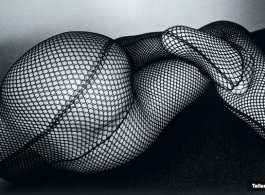Simon Lee Gallery Hong Kong proudly presents “Searching Journeys”, a survey showing the beginnings and later development of the influential photographer Daido Moriyama. Widely recognized for his innovative, highly personal and unvarnished depictions of urban life, Moriyama was a founding member of Provoke, an avant-garde magazine published between 1969 and 1970, now regarded as a seminal work of post-war Japanese art. Formed by a small group of left-wing photographers, the magazine sought to redefine the medium while chronicling the nation’s social and political turmoil. Amid the upheaval of post-war regeneration, Moriyama documented Japan’s transformation through its outcasts and underdogs. Characters such as back-street boxers, strippers, and gay prostitutes figured inhis signature black-and-white, grain-heavy style. Reflecting shifts in Japanese society through its simultaneous globalization and urban deprivation, the highly textured and dramatically contrasted images of the Shinjuku area of Tokyo depicted the fragmentary nature of Japan’s modern realities. His expressive “are, bure, boke” (rough, blurred and out-of-focus) aesthetic and his method of taking quick snapshots without looking through the viewfinder are two distinctive features of Moriyama’s work. The images are a result of experimenting with light, shade and abstraction while allowing for photographic chance. Largely shot with a small hand-held automatic camera, Moriyama’s work is often partially out of focus or shot on a diagonal composition, adding rawness and energy to his urgent photographic style.
Anchoring the exhibition is a photograph taken of a stray dog in Japan’s Aomori Prefecture. The distinctively high contrast image is iconic of Moriyama and a symbol of the artist himself-he too is an urban rambler, prowling from alley to alley while capturing his stripped down vision of the streets. Photographs at the core of his oeuvre include the “Japan Photo Theatre” series from 1968. Loosely centred on avant-garde theatre, these seamy portraits of actors and nightclub performers remain some of Moriyama’s best known images. The fish-netted legs shot close-up in the “Tights” series is a sensual exploration of texture and hard abstraction, guiding the eye to dwell on formal elements that might otherwise go unnoticed. While in “Japan Photo Theatre” Moriyama depicts Tokyo’s entertainment district as a manifestation of the city’s desires, the fragmentary images of the legs and tights similarly capture an erotic instinct.
Moriyama has been influenced by a diverse range of artists, from Japanese photographers Eikoh Hosoe and Shomei Tomatsu, to the writer Yukio Mishima, Andy Warhol, American photographers William Klein, Weegee, Eugene Atget and Jack Kerouac’s On the Road. “Light and Shadow” is a series from the 1980s which shows Moriyama’s sensibility in shooting objects and abstract scenes. Like a photographic diary with shots taken in motion, there is asense of narrative and the passage of time. Citing Kerouac’s On the Road as one of his greatest influences, his photographs are a record of his wanderings in which the journey is as important as the destination.
Daido Moriyama (b. 1938) was born in Osaka, Japan and moved to Tokyo in 1961, where he continues to live and work. His work has been collected by prominent public and private collections, including the Museum of Modern Art, New York, the San Francisco Museum of Modern Art, The Metropolitan Museum of Art, New York. The Getty Museum, Los Angeles, The Museum of Fine Arts, Boston and The Centre Pompidou, Paris. Moriyama has had over 100 solo exhibitions worldwide, including major shows at the San Francisco Museum of Modern Art, The Metropolitan Museum of Art, New York, The Fondation Cartier pour l’Art Contemporain, Paris, The Fotomuseum, Winterthur, Switzerland, The Folkwang, Essen, Germany, The National Museum of Art Osaka and the Metropolitan Museum of Photography in Tokyo.
He was recently given a Lifetime Achievement Award by the International Centre of Photography and his work has been the subject of joint retrospective with William Klein at Tate Modern (2012).



